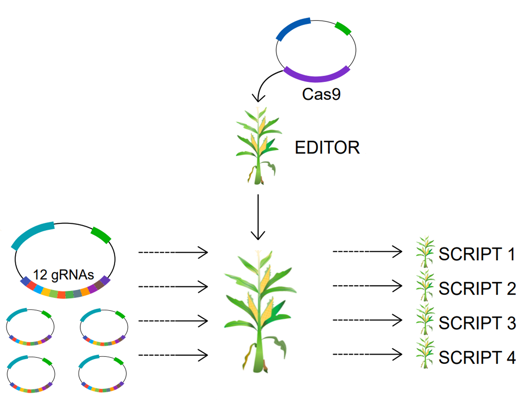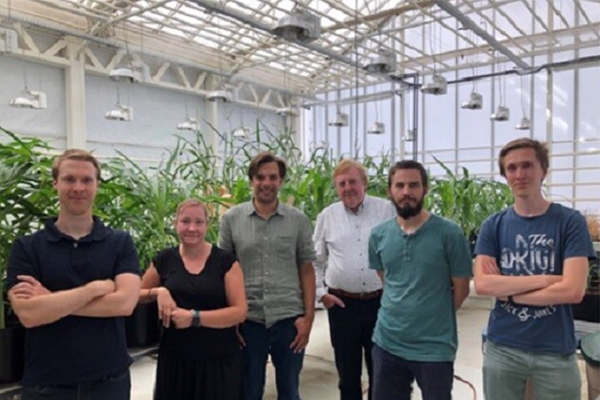Scientists at the VIB-UGent Centre for Plant Systems Biology and ILVO have developed a fast gene discovery pipeline in maize to advance breeding programs for the benefit of humanity and the environment.
According to the news agency department of APEX TDMMJ company citing the SIYAL news, The innovation is being driven by an agricultural landscape which faces major challenges – reducing yield losses during extended periods of heat and drought, to name one, the organisation says on its website.
To sustain food production, the team says we must adapt our crops to rapidly changing climate conditions, but conventional breeding programs are labour-intensive and time-consuming, and the challenges of traditional production will only increase as we move into the future.
The history of breeding techniques
“Conventional breeding has contributed greatly to the adaptation of crops to their environment but is starting to show its limitations,” says Christian Lorenzo, a researcher at the VIB-UGent Centre for Plant Systems Biology. “When trying to improve complex traits like crop yield, effects are often limited or insignificant, making this a slow process. But climate change is forcing us to develop more productive crops with fewer resources.”
For millennia, humans have been domesticating fruits and vegetables by selecting plants with favourable characteristics. Selecting offspring that possess the beneficial properties of both parents results in superior crops based on natural variation. This approach is valuable for many agronomic traits, and over the years, these improved traits could be linked to a certain region in the plant genome.
Conventional breeding entails the crossing of varieties that contain the desired traits in their genome. Traits essential for plant survival and susceptible to environmental stress, such as growth and yield, are often controlled by a complex gene network, VIB-UGent says.

The researchers believe that to achieve significant growth improvement, breeders might need to combine multiple growth-stimulating properties.
Finding the right combinations to obtain optimal results under varying field conditions is time-consuming, but with molecular biology, agronomic traits can be linked to specific genes rather than genomic regions, narrowing down the genomic targets for breeding.
Lorenzo continues: “We have now developed a pipeline in which CRISPR-mediated gene editing of multiple genes simultaneously is combined with different crossing schemes to identify the key genes involved in trait enhancement. In other words, BREEDIT is a support platform for breeding using innovative gene editing techniques.”
CRISPR-Cas9 is an established gene-editing technique to modify the plant’s genetic material with high precision. The molecular scissor Cas9 is directed to a predetermined position in the target gene by a guide molecule – gRNA – where a small genetic alteration is induced.
The BREEDIT team has developed a strategy to edit up to 60 genes in all possible combinations. Introducing 12 gRNAs at once into a Cas9-expressing parent generates a multiplex gene-edited maize plant. Implementing a crossing scheme with plants containing a different set of gRNAs leads to a diverse collection of edited maize plants that can be screened for improved agronomic traits.
The BREEDIT strategy: 12gRNAs can be introduced at once in a Cas9-expressing maize plant (EDITOR). As a result, multiplex gene-edited maize plants are generated.
Implementing a crossing scheme on the multiplex gene-edited maize plants results in a diverse collection of edited plants that can be screened for improved agronomic traits.
Prof. Dirk Inzé, lead of the BREEDIT project comments: “BREEDIT provides us with a tool to quickly identify promising gene edits to improve agronomic traits in crops. Especially for complex traits such as yield, gene editing-assisted breeding will become increasingly important to keep up with the changing environment.”
The future of breeding
Generating a large collection of gene-edited plants in a short time facilitates a high-throughput screening of genes and combinations of genes for interesting agronomic applications. Furthermore, targeting multiple genes simultaneously allows you to overcome redundancy within a gene family – when the loss of function of one gene is compensated by another gene. Targeting whole gene families could lead to stronger effects on plant growth and development, and enables scientists to investigate genetic interaction networks on the gene family level.
Prof. Tom Ruttink adds: “The BREEDIT pipeline is truly an asset for both advancing the basic understanding of complex molecular networks regulating plant growth, and supporting breeding programs in the framework of climate-resilient agriculture.”





